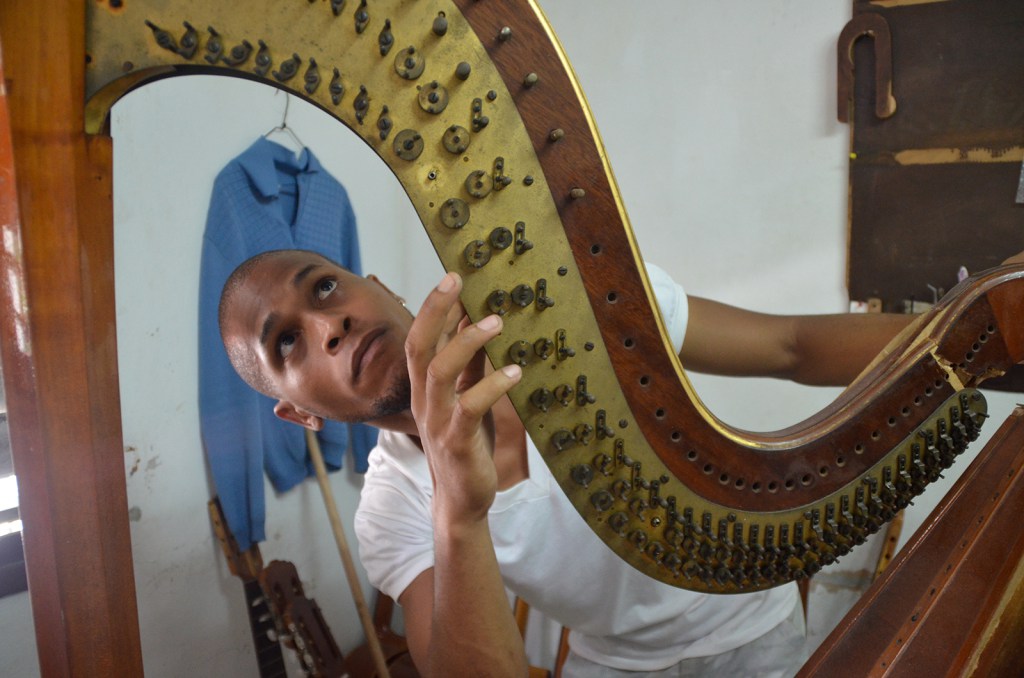Cuba’s madres (y padres) of invention

*This is a wonderful read, well worth the time invested. This is one of me favorite online magazines. It never disappoints. VL
By Rob Waters, Craftsmanship Quarterly (30 minute read)![]()
My first encounter with what Cubans call inventos–the term they use for the hacks and gadgets they create to keep things working—comes before I have even left the Havana airport. I pass through an immigration queue staffed by agents in short skirts and fishnet stockings, head to the taxi stand, and a big, genial taxista named José Vigoa Ruiz ushers me into the front seat of his 1955 black Cadillac. As we roll and bounce our way into downtown Havana, Ruiz proudly describes his car. “The engine is British, the transmission is from a Ford van, the steering system is from a Mercedes Benz, the brake system is Toyota, and the electric windows are from a Korean jeep,” he says, with a triumphant sideways glance. “Only the body is original Cadillac.”
The main reason for all this adaptation, of course, is what the Cubans call el bloqueo (the blockade)—the U.S. embargo on trade with Cuba, which has been in place since 1960 and remains so today, despite the reestablishment of diplomatic relations between the two countries last year. While the Obama administration has opened a U.S. embassy in Havana, greatly relaxed the travel ban, and eased some other barriers, only Congress can lift the embargo. That embargo prohibits U.S. companies from selling Cuba products such as computers, farm tools, fertilizer, software, clothing—and, of course, cars and auto supplies. Cuba then compounded these privations. For years, the government has been reluctant to allow significant foreign investment, or even much private economic activity.
Over the decades, while most countries followed the U.S. embargo, Cuba did most of its trading with the Soviet Union and its allies. The fall of the Soviets, in 1991, left Cuba desperately short of oil and sent the economy into a tailspin—an era the Cubans refer to as el período especial—the special period. To avoid total disaster, Cuba loosened the strings of central control. Suddenly, people could open small businesses and sell fresh produce, and some kinds of foreign investment were allowed. In the late 1990s, Venezuela’s Hugo Chavez joined the effort becoming Cuba’s new foreign patron. He shipped cheap oil to the island in exchange for medical services provided by thousands of Cuban doctors sent to work in Venezuela. Its oil needs met, the government re-imposed state control and rolled back the economic reforms.
Read more stories like this in NewsTaco. >>
Today, Chavez is dead, oil prices have crashed, the Venezuelan economy and government are in crisis—and Cuba has a bad cold again. (Indeed, during my visit in July, the government announced new austerity measures and many Cubans spoke of the risks of a nuevo special period.) While a few countries, notably Canada, Spain, and especially China are making investments and selling goods to Cuba, most of the developed world has continued to follow America’s lead.
“In Cuba, you have a pendulum swinging back and forth between economic idealism and pragmatism,” says Theodore Henken, a sociologist at Baruch University in New York who has visited Cuba more than 25 times since 1997 to study its economic culture. Idealists want to uphold socialist values by rooting out changes that create income inequality, Henken says, while pragmatists want to reward quality work and encourage initiative. Each produces a reaction and response, keeping the Cuban economy in a sputtering limbo.
Cuba’s invento culture, and the large informal economy it has spawned, is the country’s most obvious response to these pressures. To survive in today’s world, cars and refrigerators somehow have to keep running. And indeed they do, thanks to Cuba’s inventores.
[Photo courtesy of Craftsmanship Quarterly]

